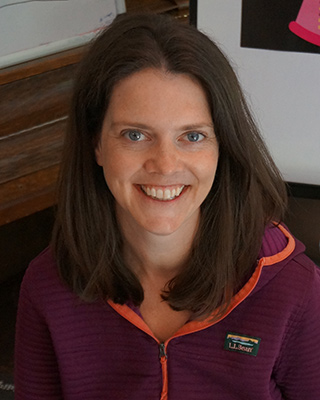Connecting With Students Through STEM
 When asked what keeps her coming back year after year to teach with UW Youth & Teen Programs, Caitlin Chamberlin answered without any hesitation: “The students!”
When asked what keeps her coming back year after year to teach with UW Youth & Teen Programs, Caitlin Chamberlin answered without any hesitation: “The students!”
“They’re enthusiastic, invested and interested,” she said. “They’re there to learn and dig deep, and I absolutely love their questions.”
Chamberlin taught for many years at Bertschi School in Seattle and currently tutors students one-on-one in math, science, writing and reading. She’s been a regular — and popular — instructor with UW Youth & Teen Programs for more than 15 years, teaching science, technology, engineering and math courses. She enjoys the flexibility the program gives her to design her courses in a way that taps into her students’ passions and interests. For example, during a STEM course last summer for fourth and fifth graders, she and her co-instructor, Steve Howard, created an Olympics-style competition for Spheros, small robots with programmable sensors.
“The students helped design events for their Spheros to compete in,” Chamberlin said. “There was a skating event where they had to make their Sphero go in a figure eight. And a soccer event where they had to kick a ball into a goal using their Sphero. They were very serious about it, but it was also super fun.”
The UW Experience
For other courses, she takes advantage of the partnerships UW Youth & Teen Programs has with the wider UW campus.
“Last summer, we visited a drone lab and talked with scientists about how they program these drones. We've taken a tour of the tunnels underneath campus operated by the power plant. We've been to the fish library in the Burke Museum and visited the nanofabrication facility on campus to learn more about the methods used to create nanomaterials.”
Chamberlin recalled one particularly memorable field trip to a chemistry lab that investigated how organisms could live in outer space. “They were using the hotspots in Yellowstone to study how organisms can potentially survive in these extreme environments. Our students were fired up about it. They were so excited to learn about organisms in unknown places, and that there's a whole lab for that.”
And she’s already making plans for this summer’s courses, with a newer version of the Sphero robot. “The Sphero BOLT is waterproof. I would love to involve some sort of component with a pool challenge.”
Whatever path her courses take, Chamberlin knows she’ll discover just as much as her students will.
“I learn right along with them and feel very lucky that that’s a part of my job.”